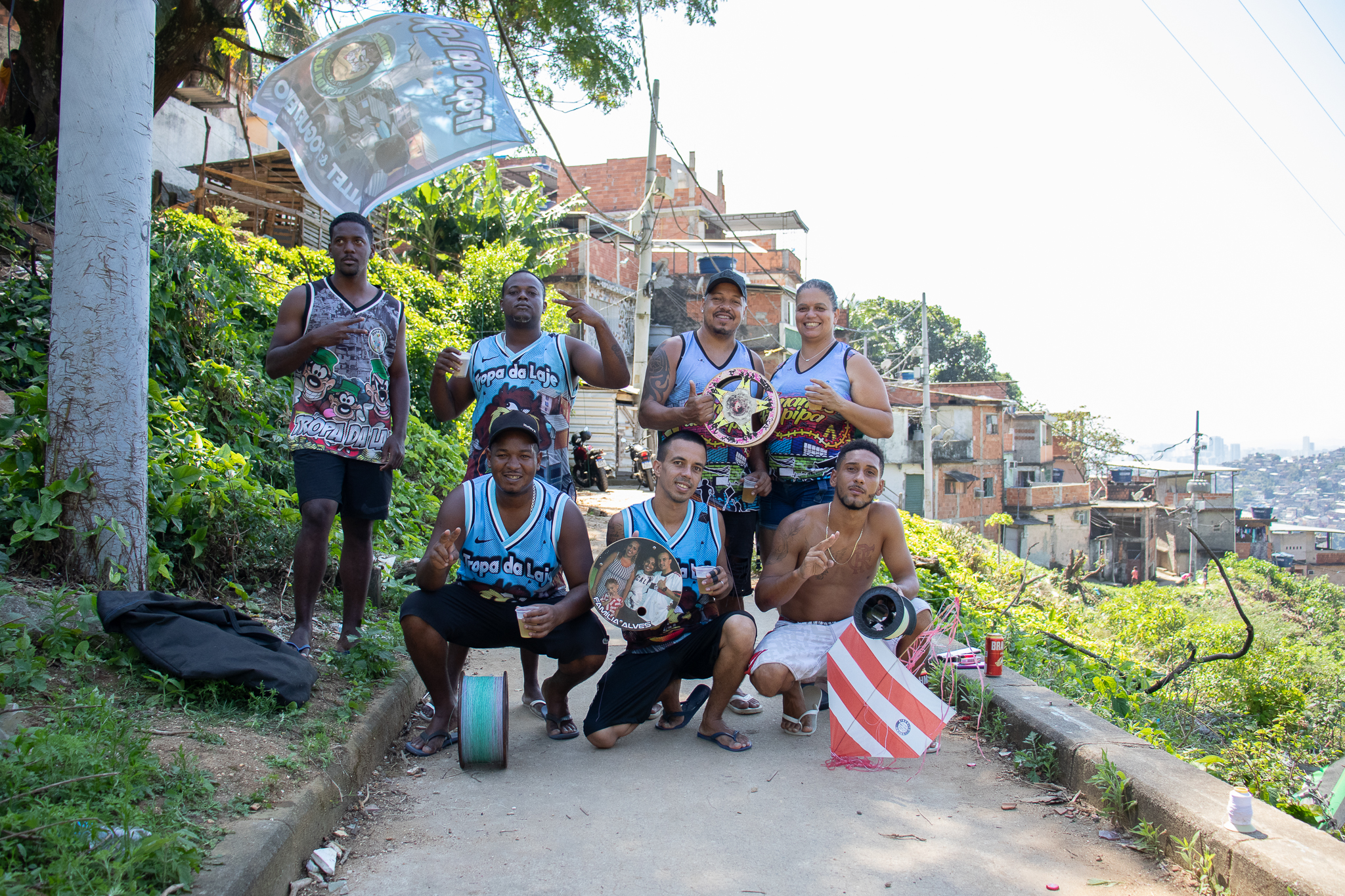
Have you ever seen and appreciated kites flying in the sky, floating in the air like birds? This is a common sight in the sky above Rio de Janeiro, with kites of various colors blending with the blue sky and white clouds, making up the landscape of Rio’s favelas.
Flying a kite is one of the oldest and most common activities in Rio’s favelas, popular among children and adults alike. Its popularity gave rise to the Kite Festival created by a group of residents from Morro do Turano, a community in the North Zone neighborhood of Tijuca. Organizers decided that kite flying would be the center of attention at least one Sunday every month or two, from daybreak to nightfall: a full day dedicated to one of the most beloved pastimes of children in the favelas.
The Turano Kite Festival
The idea for the festival came about during a conversation between three residents born and raised in the community. The intention was to revive traditional pastimes that were common in favelas, something different that would brighten children’s smiles and provide a way of playing that doesn’t revolve around technology. With kites as the main attraction, kite flyers from Morro do Turano partnered with other kite flyers from the Fallet and Fogueteiro favelas to organize the kite festival, putting Turano on the kite festival roster and bringing joy to kite enthusiasts of all ages.
The Morro do Turano Kite Festival on August 28, 2022 was attended by kite flyers and festival organizers from various favelas. Seven residents who promote kite festivals were interviewed for this article: three from Turano, from the Festival dos Crias team (Jocimar “Brinquinho” Vieira da Silva, Moisés Alves da Silva, and Lucas da Silva do Nascimento); and four from Fallet and Fogueteiro, from the Tropa da Laje team (Roberto “Beto” Alves, Emerson Gomes, Dayvison, and Eric Batista). They all had lots to say about kite flying, as an expression of art, sport, leisure, and cultural heritage in Rio de Janeiro. The success of the August event was followed by two other events held on October 23, 2022, and the most recent on January 29, 2023.
A Brief History of Kites and the Role of Kite Makers
According to historians, kites originated in the Far East, most likely in China, over 3,000 years ago. The first kites were bird-shaped and closely associated with religion and mythology. They were also used for military purposes, to frighten enemies who believed in the presence of evil spirits, being released at night and equipped with an Aeolian harp, a musical instrument which played in the wind.
In the West, kites appeared following the development of transcontinental trade routes. In the 12th century, kite-flying spread in Asia and around the world. It is believed that explorer and merchant Marco Polo, when cornered by local enemies on one of his expeditions in China, set a kite flying full of fireworks, exploding them in the air toward the ground.
As well its religious and recreational aspects, kites have also supported scientific research. In the mid 18th century, Scottish astronomer Alexander Wilson used six kites to measure changes in air temperature at different altitudes. In 1752, Benjamin Franklin flew a kite during a thunderstorm, demonstrating that lightning is an electrical phenomenon and not of divine origin.
Portuguese settlers brought kites to Brazil at the end of the 16th century. However, research shows that kites were already flying on the African continent, and that enslaved peoples may have brought the custom to Brazil: sentinels from the Quilombo dos Palmares, one of the first quilombo communities of enslaved Africans who escaped and resisted colonial rule, used kites made out of sticks and leaves to alert one another of incoming threats.
Today, the most widespread kites in Brazil are made of paper and bamboo sticks, while others use plastic bags and newspaper. Thanks to the pipeiros, those who make and sell kites, the art and sport of kite flying continues to thrive in Brazil. The kite-making profession is still not regulated by the Ministry of Labor and Social Security (MTPS), but there are groups organizing for the official regulation of the profession. These include the Rio de Janeiro State Kite Association (APERJ) and the Brazilian Kite Association (ABP), in São Paulo, who organize competitions, kite flying events, and workshops besides offering support for social projects in the urban peripheries such as collections for food, wheelchairs, and hygiene products for those in need.
As the sector continues to grow, several media channels dedicated entirely to the world of kites are emerging, with various articles and posts published about kite flying. The sector has also been politically active and, consequently, kites have been given the status of historical and cultural heritage in the state of Rio de Janeiro through Law 7.870/18, enacted by Paulo Ramos (PDT) and approved in 2018 by then Governor Luiz Fernando Pezão (MDB). This resulted in the creation of Kite Day celebrated on June 29 and established in the Rio de Janeiro’s Official Calendar.
Aside from being an expression of cultural heritage, kite flying as a sport brings people together beyond the borders of favelas and peripheries, all around Brazil.
“Kites are a way for children to have fun. When you give a child some string and a kite, that’s it, their smile goes all the way up… [When children see] a kite flying, they go after it, but only one can catch it, do you know what that means? 30 children go for it. If one child says they want that kite and they catch it, [it] brings chaos… you can give them five other kites, [but they] don’t want it. They want the one the other kid caught. Children have a lot of energy.” — Moisés Alves, member of the Morro do Turano Crias Team
As well as being a moment of leisure and fun, kite flying is a social activity that brings people together. It also helps supplement a family’s income for those who sell kites within or outside the favela. People who live and survive by making and selling kites are known as pipeiros.
In addition to his day job, Roberto Alves, known as Beto, supplements his family’s income by making and selling kites in his store, “Beto Pipas,” located in the Fogueteiro community where he lives. He manufactures all the kites for the Tropa da Laje Fallet and Fogueteiro RJ team, of which he is a member.
“I think I was already flying kites inside my mother’s belly, because my father used to fly kites, and my grandfather still does. As for me, I have made kites since I was a child.” — Roberto Alves
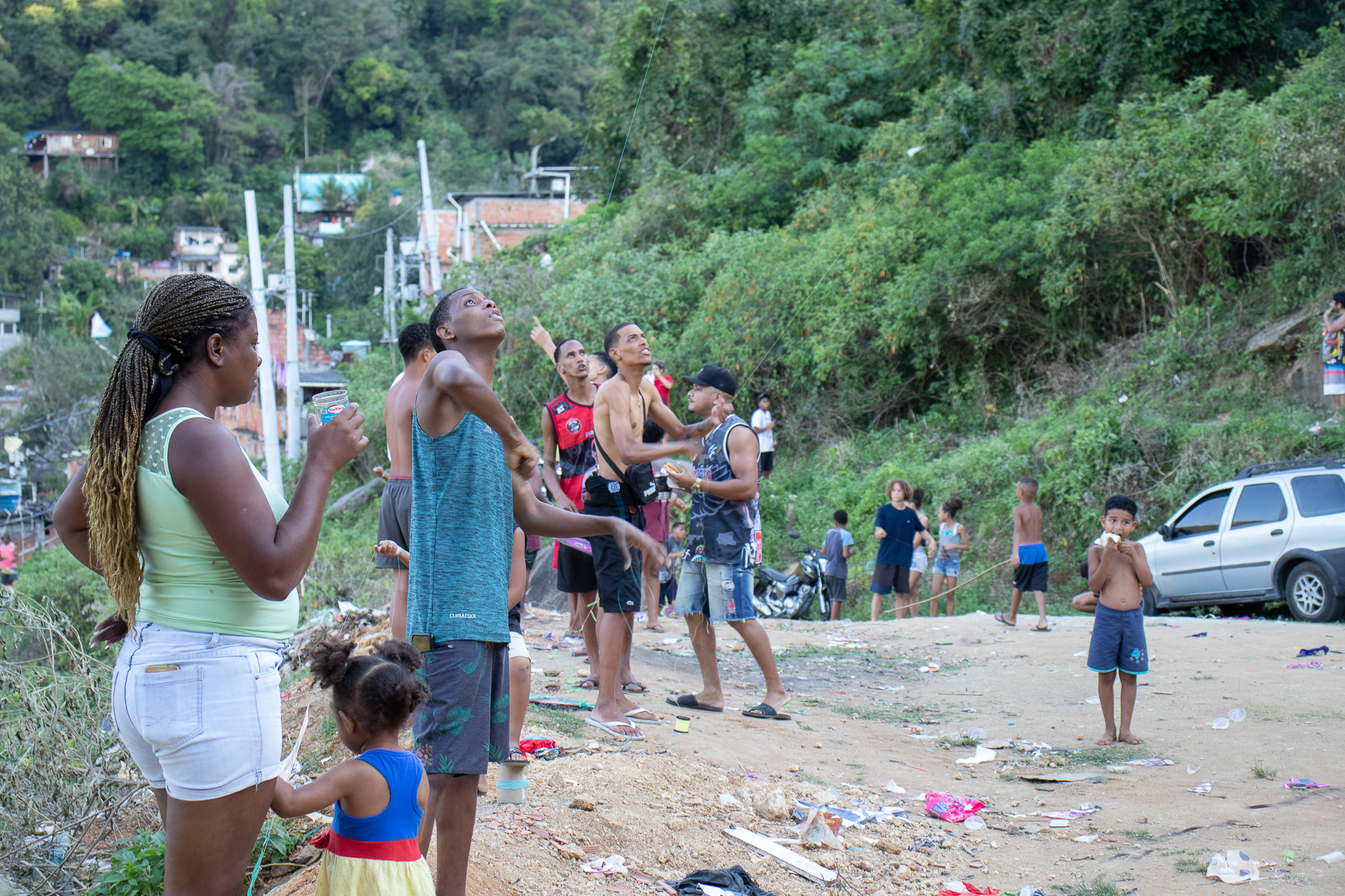
While regulation is still pending, kite-making professionals are still seen as suspect by local police within the favela as they associate the activity with criminality. Both Beto and Eric Batista explained that in previous decades kite flying was associated with drug trafficking, and that any boy seen with a kite in his hands would be approached by the police. Members of both teams, Festival dos Crias and Tropa da Laje Fallet and Fogueteiro RJ, said they remember a time when flying kites almost ceased to exist as a leisure activity because it was so stigmatized.
“People think that everyone who lives in the favela is a criminal. I am a worker; I have my job. I have been making and flying kites since I was a child. The police have entered my home, broken my kites, and cut my threads. They told my wife, ‘That’s not a profession. It’s a game for criminals.’ Even though I work and [making kites] is my additional income because I have small children.” — Roberto Alves
Jocimar Vieira da Silva, known as “Brinquinho,” member of the Festival dos Crias Team in Morro do Turano, said:
“It’s so rewarding to, all of a sudden, be part of something that was prohibited a few years ago. Today, you have the freedom to do this, you can have fun without a problem. In the past, kites were criminalized, right? Today you can be the creator of something that was forbidden, and you now have the freedom to fly it… because kites are leisure, they are sport. Children like to play, to see another kite flying and go after it.”
Although the profession is still viewed with suspicion by the police, kite flying is not prohibited. What is prohibited by law is the use of abrasive cutting strings known as cerol or linha chilena. Coated in a mix of glue and ground glass to make them extremely sharp, abrasive strings present an immense risk not only to those who fly kites but to the general population. There are several municipal, state, and federal laws to punish those who sell, store, or carry cerol string, even for recreational use, with fines or jail time.
In the state of São Paulo, for example, Law 17.201/2019 prohibits cerol as well as any other abrasive material that can be applied to the lines. The fine for non-compliance with the law is approximately R$1,326.50 (US$260). In the city of Rio de Janeiro, Law 8.478/19 results in a fine of R$342.11 (US$66) for the purchase, use, or possession of cerol materials. Previous legislation only punished dealers and manufacturers of abrasive cutting string.
There is currently a hotline aimed at receiving reports with information about the offense. Campaigns such as No Cerol! and Cerol Kills were created to raise awareness about the dangers of flying kites in public roads, and above all the dangers associated with abrasive cutting lines.
There are no designated spaces to fly kites in the city of Rio de Janeiro. State and municipal authorities advise people to use open spaces such as squares, soccer fields, and parks, and avoid busy streets and highways or anywhere with a flow of traffic.
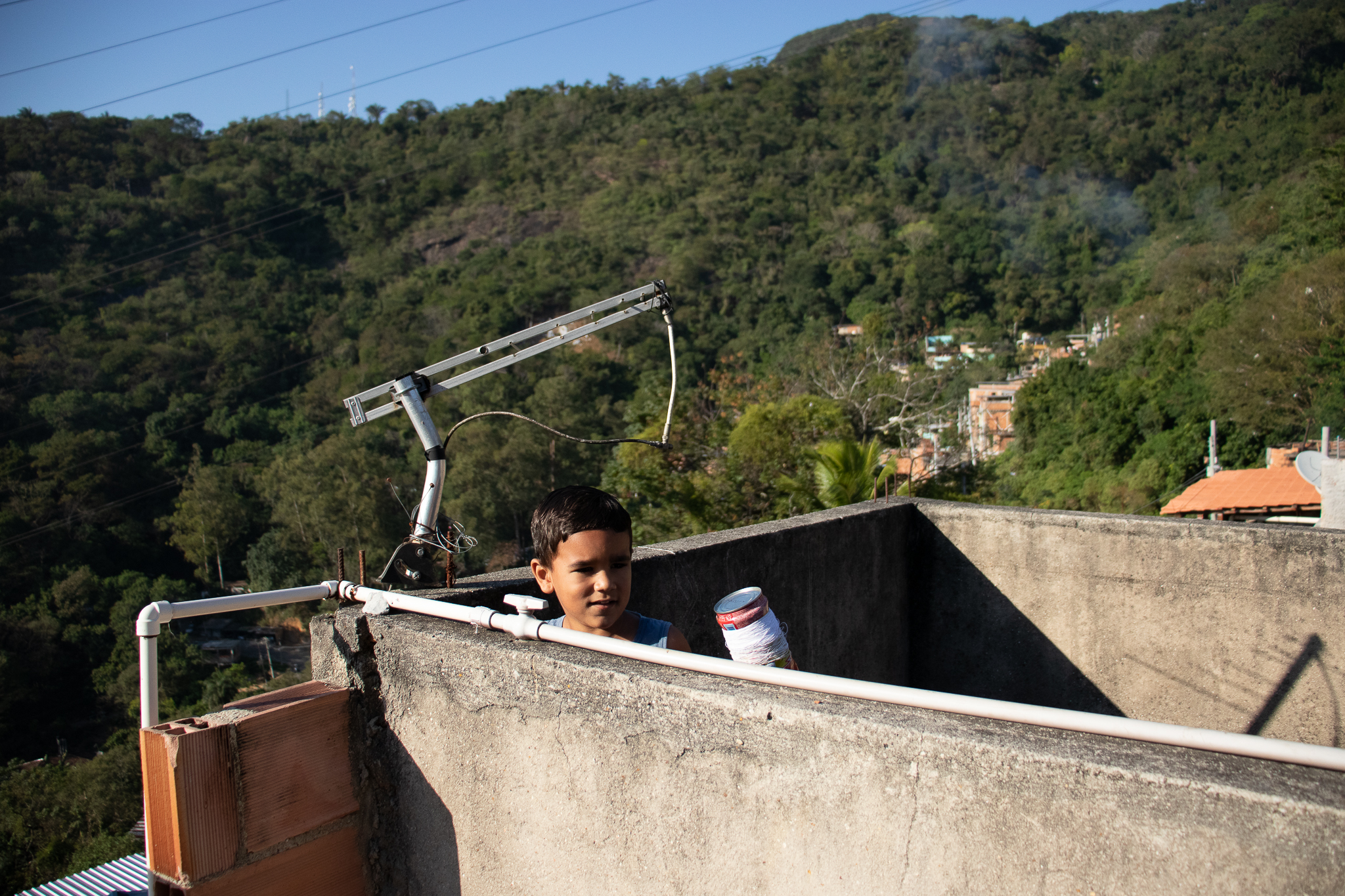
In the favelas, children tend to fly kites on rooftops and playing fields: the higher up they are, the better. Kite festivals hosted by the Festival dos Crias team often take place in one of the highest parts of Morro do Turano, called Bicão. This area is located between the Rodo, Mina, Caixa D’Água, and Raia neighborhoods, a little below Pedacinho do Céu. Bicão is located on the Estrada do Sumaré, also part of Complexo do Turano.
The Bicão area has a large, spacious field where organizers set up the entire structure, including a sound team and DJ to entertain the crowd. The event begins and ends with a lot of samba, pagode, and Brazilian funk music—sounds that go well with the event. Freezers store cold drinks to be distributed to kids or sold to raise money for subsequent festivals. The event always raises awareness about the dangers of cerol string as well as the importance of not flying kites in places where traffic flows.
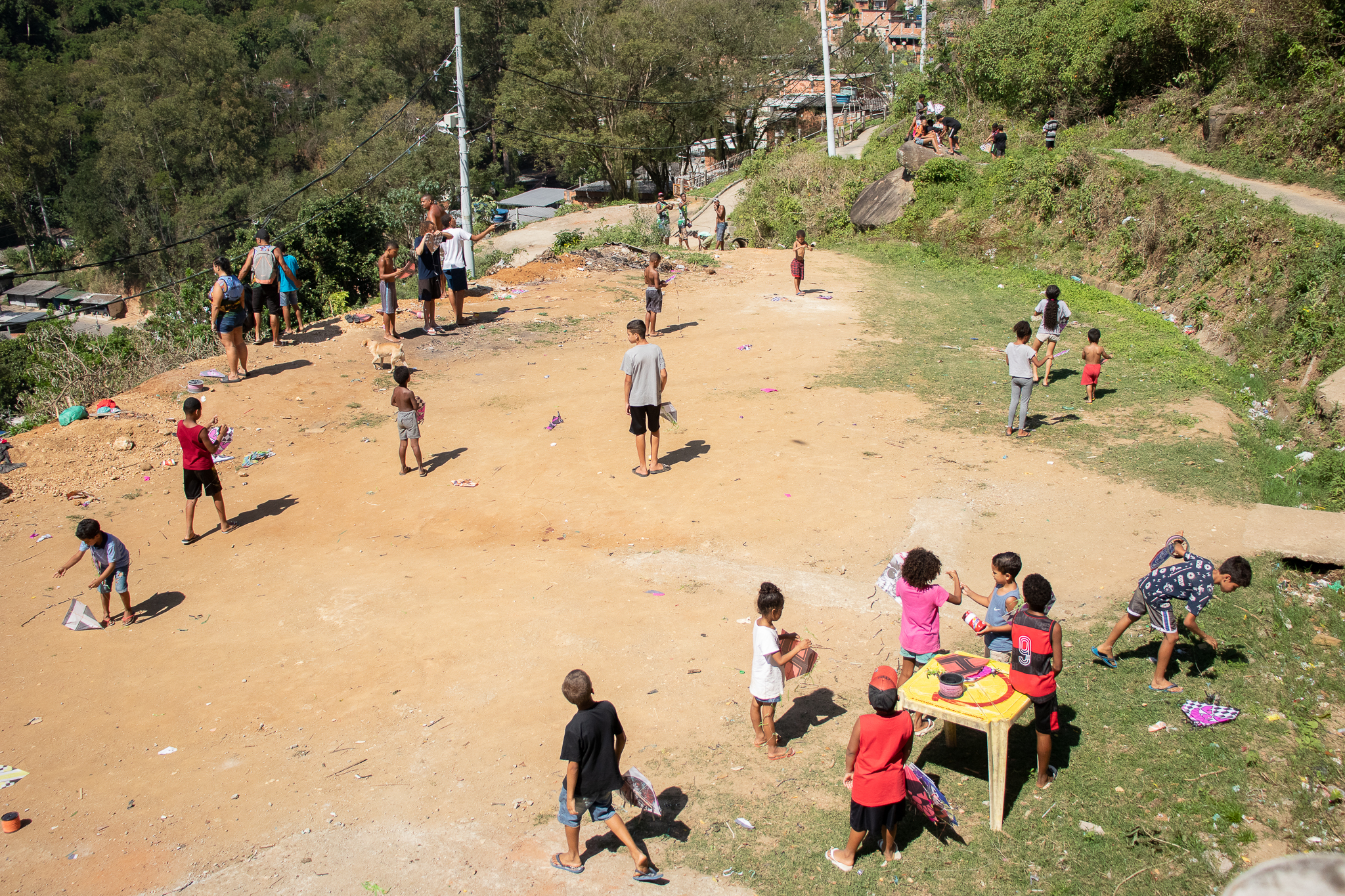
According to festival organizers, the whole event is aimed at children, which means that everything has to go according to plan, without fights, incidents, or accidents. Brinquinho, a self-declared pipeiro, is a senior organizer for the event even though he doesn’t know how to fly a kite. Although he admires adults who know how to fly a kite and who take the time to do so, he prioritizes his role as festival organizer. His joy comes from seeing kids flying kites, running after them and having real fun, like it used to be before video games.
As for the invited team, the Tropa da Laje Fallet and Fogueteiro RJ, Brinquinho says that all members are pipeiros raiz, lifelong kite enthusiasts who have been flying kites since they were very young. The visiting team—consisting of Gomes, Pepeto, Beto, Dayvison, and Batista—has been active for two years and organizes kite festivals in the Fallet and Fogueteiro communities, located between the neighborhoods of Rio Comprido and Santa Teresa. Their events are also community oriented, with distribution not only of kites and lines, but also snacks and T-shirts with the team’s logo.
The Tropa da Laje team was created during the coronavirus pandemic and also collects and redistributes food and hygiene products in the favela, helping those in need. Gomes, one of the founding members, says that it has gotten harder to gather such items. Despite this, they have not given up because they know that many families taking part in the events are still in need of aid. Gomes has gotten help from local traders, who have helped provide snacks for the children.
Besides hosting their own kite festivals, the Tropa da Laje Fallet and Fogueteiro team also participates in events held in other communities. Their members, all in uniform, carry the team’s flag and raise it high.
All of this begins and ends with kites. Kites encourage movement, generate positivity, and bring a sense of achievement to children and adults alike. Adults end up reliving their childhood days, keeping their inner child alive as they fly a kite and watch it drift with the wind. The freedom brought by this sensation means the hardships of daily life in the favela are forgotten for a few hours; all focus is on the line, the kite tail, and of course, the kite itself. The only concern is not getting crossed by another kite flyer and crossing their kite line instead, running to catch it and become “that guy,” the one who left everyone behind and won the prize. This is why many festivals like the one in Turano continue to happen and should happen in other communities for a long time to come.
Since the early days, parties and festivals celebrating kites have been held with the help of the community. Jocimar “Brinquinho” Vieira da Silva from Turano commented on the way kite festivals are held in a collaborative way: “We find something here, something there, a donation here, another donation there, and we make it happen. I have 15 crates of soda, 500 hot dogs, and 1,000 kites to distribute.” The festival relies on people who can make donations and contribute with food, drinks, lines, kites, etc. Time spent organizing the event is also an essential contribution.
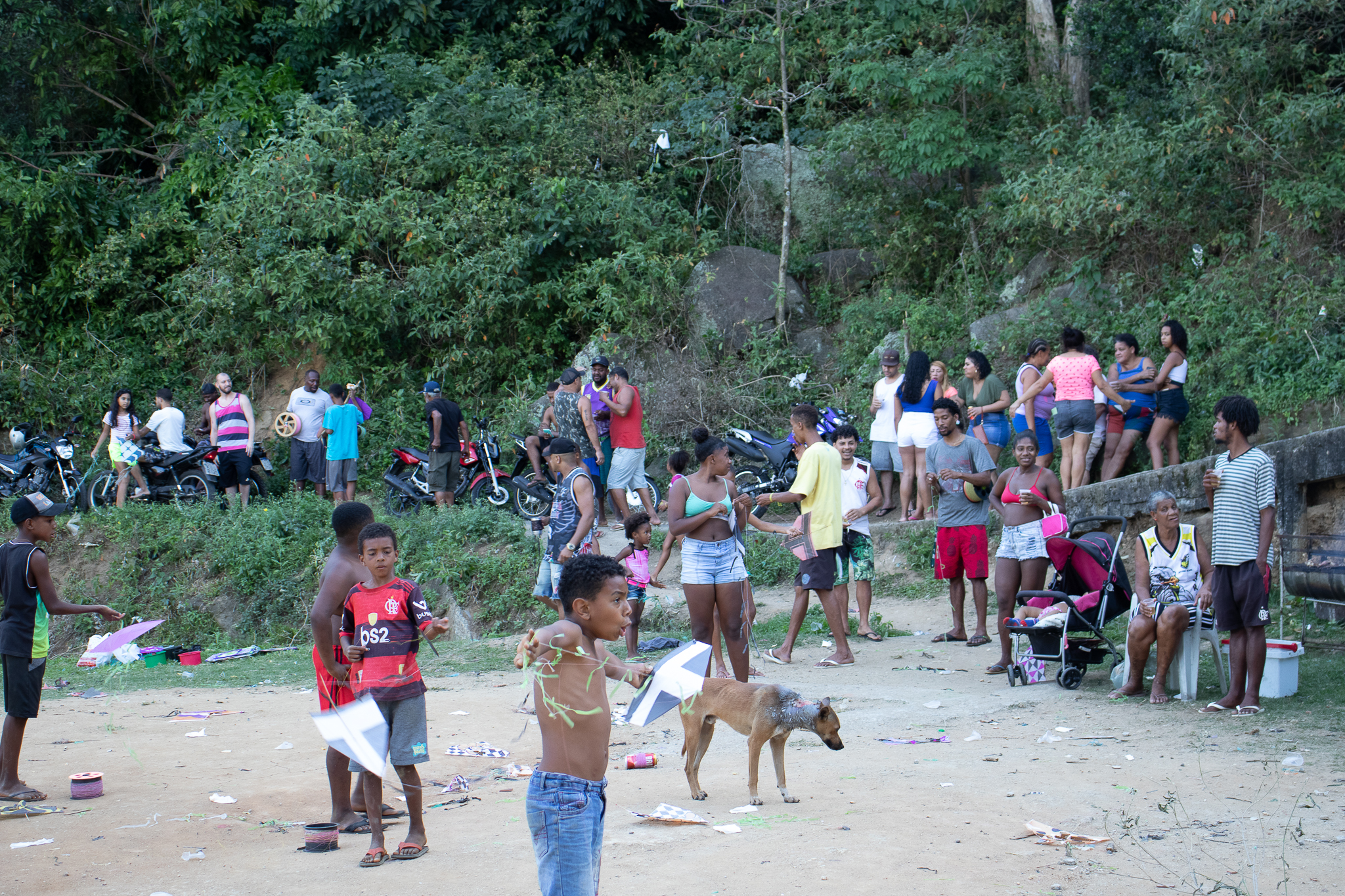
About the author: Carla Regina Aguiar dos Santos was born and raised in Morro do Turano. Her work as a community journalist has always prioritized the day-to-day happenings in the favelas. Reporting what goes on beyond the view of traditional media, she has contributed to the Favela News Agency (ANF), A Pública, Eu, Rio! and Terra. She received the ANF Award for journalism in the culture category and the Neuza Maria Award for Journalism.
